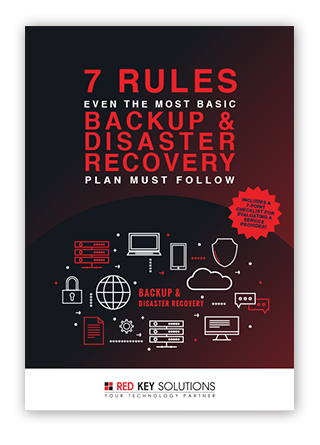
Biggest business continuity threats you should monitor round-the-clock
To thrive in a rapidly evolving corporate environment, organizations need to be able to anticipate, prepare for, and respond to change. They must always look out for forces that can disrupt business operations such as:
#1. Unplanned IT downtime
With many business processes now highly dependent on IT systems, any major IT infrastructure failure such as network connection problems can cripple entire operations. That’s why companies must treat IT solutions as top-priority assets that require continuous development and investment to secure them.
#2. Cyberattacks and data breaches
As organizations move more of their data and operations to the digital space, they naturally increase their exposure to cyberthreats, particularly distributed denial-of-service (DDoS) attacks, phishing, and viruses. Corporate leaders are anxious about unauthorized access to their databases and other critical systems, worried that these will be damaged, altered, destroyed, or held hostage by ransomware.
These fears are only further fueled by past attacks on Google and Apple, high-profile companies that were expected to be able to thwart cyberthreats. Not only that, the 2018 BDO Cyber Governance Survey revealed that cyberattacks skyrocketed in 2018: a 350% year-over-year increase in ransomware attacks, a 250% increase in spoofing or business email compromise (BEC) attacks, and a 70% increase in spear phishing attacks. Companies must then beef up their data and IT systems security.
#3. Adverse weather and natural disasters
The frequency and severity of storms, hurricanes, earthquakes, flooding, and other natural catastrophes are on the rise. These events have a devastating impact on business operations and physical infrastructures. For example, in 2018, 14 different natural disasters ranging from hurricanes to wildfires to winter storms caused $91 billion in damage, both to property and community infrastructures in the United States alone. In fact, global insured losses in 2018 were 31% higher than the average of 2008–2017.
Sadly, these numbers are expected to rise exponentially as climate change makes natural calamities more common. Considering the massive damage these bring, business leaders must seriously look at climate change as a real threat.
Download our free eBook!
Having a backup & disaster recovery (BDR) plan is non-negotiable if you want to mitigate the risks. Let us walk you through creating your own strategy with our informative eBook and learn the 7 Rules even the most basic backup & disaster recovery plan must follow.
#4. Utility supply interruptions
Natural disasters such as the hurricanes in 2017 and winter storms in the northern US in 2018 caused electrical outages, pushing businesses to rely on backup power systems such as diesel and natural gas generators, batteries, and uninterruptible power systems. Other utilities, such as water, gas, waste disposal or steam, must also be considered for their potential to disrupt operations.
#5. Political and regulatory changes
The Business Continuity Institute (BCI) Horizon Scan Report 2019 revealed that political change incidents affected organizations with relatively low frequency but with great impact. For example, Brexit had major implications on employment and financial volatility.
The enforcement of the General Data Protection Regulation (GDPR) in EU countries has also crippled numerous businesses since they were unable to comply with the new stringent rules. Such regulatory changes pose a risk for corporations, and more countries and regulatory bodies are expected to issue their own regulatory updates sooner or later.
Importance of business continuity and disaster recovery (BC/DR)
These business continuity threats highlight the need for organizations to take a more holistic view of their business health and success. To limit risk and achieve organizational resilience, organizations must adopt BC/DR plans. In fact, the BCI 2019 report showed that organizations with business continuity plans for longer than one year had lower losses (6%) than the average (7%) from disruptions in the last 12 months.
BC/DR practices enable companies to get back on their feet after problems occur, reduce the risk of data loss and reputational harm, and improve operations while decreasing the chance of emergencies.
But developing a BC/DR strategy is a complex process that requires conducting a business impact analysis (BIA) and risk analysis, as well as developing BC/DR plans, tests, exercises, and training. It’s best to leverage the expertise of a managed IT services provider (MSP) like Red Key Solutions. With over a decade of experience, we can help ensure business continuity even in the face of disruptive forces. Invest in your company’s resilience today!




